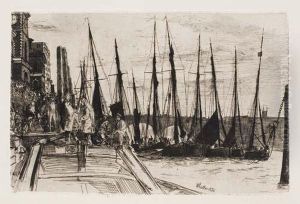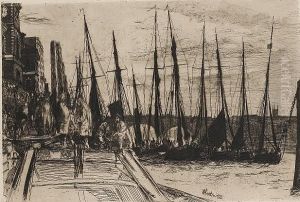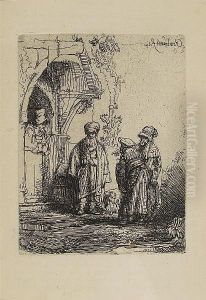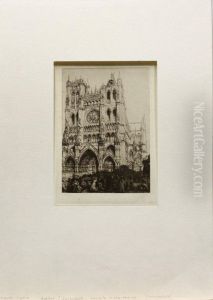Philip Gilbert Hamerton Paintings
Philip Gilbert Hamerton was an English artist, art critic, author, and editor, born in Laneside, a hamlet near Shaw and Crompton, Lancashire, England, on September 10, 1834. He grew up in an era when the Romantic movement had a significant influence on the arts, and he was particularly inspired by the landscapes and the natural world, which would be a recurrent theme in his work throughout his life.
Hamerton's early education was interrupted by the untimely death of his mother when he was just a child. Nonetheless, he managed to pursue his passion for the arts, and he later attended the Manchester School of Design. He had a brief stint at the University of London but did not complete his studies there, choosing instead to focus on his artistic career.
In his early twenties, Hamerton moved to France, where he lived and worked for most of his life. During his time in France, he married Eugénie Gindriez, the sister of one of his friends. The French countryside, particularly the regions around the Auvergne and the Pyrenees, provided a rich tapestry of landscapes that Hamerton captured in his etchings and paintings.
Hamerton was a prolific writer and art critic, and he contributed to various periodicals of the time. He was deeply engaged in the intellectual art debates of the day and wrote extensively on art education and the role of art in society. His books include 'Etching and Etchers' (1868), a significant work that helped to revive interest in the art of etching. He also wrote 'The Intellectual Life' (1873), 'Round My House' (1876), and 'Landscape' (1885), among others. These publications were well-received and contributed to Hamerton's reputation as a thoughtful and knowledgeable art critic.
In addition to his writing and painting, Hamerton was the editor of 'The Portfolio', an art magazine that was influential in promoting the etching movement in Britain and beyond. Through 'The Portfolio', Hamerton introduced readers to a wide range of artworks and artists, providing insightful criticism and championing etching as a fine art form.
Hamerton's work was characterized by a deep appreciation for nature and a commitment to realism. His landscapes and etchings often reflect a serene and contemplative quality. He was also known for his skilled draftsmanship and his ability to capture the subtleties of light and atmosphere.
Philip Gilbert Hamerton passed away on November 4, 1894, at the age of 60. Throughout his life, he had been an advocate for the arts, a respected critic, and a dedicated artist. His contributions to the art world, particularly in the realm of printmaking and art criticism, continued to influence artists and thinkers long after his death.



